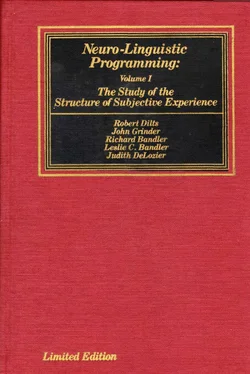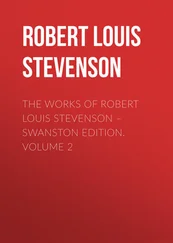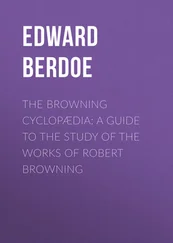
His condition was resolved by integrating the negative 4–tuple and the dialogue with other resource experiences, and by giving him a well conditioned anchor for relaxation and for eliciting his recall strategy.
4.412 Polarity Strategies and Negative Motivation Strategies in Learning.
Negative kinesthetic experiences are not always a block to learning or to accessing resources. Many people access their resources only when the situation makes them grow stressful or anxious. Some become motivated by harsh auditory commands and hard looks. There are students who put off an assignment until they say to themselves, "I'll never be able to do this on time now," to which they immediately have a polarity response and do the assignment easily and well.
People who operate best under pressure may have a difficult time operating where there is no pressure (or "challenge"), because the situation does not access the representations that trigger their most effective resource strategies.
These strategies are not limited, of course, to people in the context of education but occur in many other contexts and tasks. Very often people who have negative motivation or polarity strategies have a high tension level and may end up with stress related physical ailments common in this culture. We will discuss these strategies and how to deal with them in more detail in the Design Section of this book.
It will be important for anyone involved in the process of teaching to tune their sensory channels to pick up feedback from students. Non–verbal cues like head nods, breathing changes and other systematic minor body movements will indicate which people are following the presentation and when. Observing eye movements, tonal shifts and other easily available accessing cues will let you know which systems and strategies students are using.
The typical written test is only one way of getting feedback for how much students are picking up (though probably the most common). It is also, as we have shown previously, limited in both the kind and reliability of the feedback it gives. For example, it reveals nothing about the strategy a student is employing (excepting, in some cases, to an NLP trained teacher, depending on the type of written test). Many students who take foreign language courses are able to pass written exams with A's or B's but learn little of the spoken language. One important task of education is for students to learn to achieve the designated outcomes of learning assignments. Too often what happens is that written test performance becomes the primary measuring process and outcome of the educational institution.
Setting up tests that provide useful, accurate feedback is crucial to the educational process. To do this educators must decide what kind of outcome to test for. One of the initial distinctions in outcomes to make is whether (1) you have a specific set of contents you must teach — that is, do you have to teach X number of people N amount of information or (2) you want to teach learning skills specifically targeted for the subject matter of your courses. In the first case you will want to pace and utilize your students' existing learning strategies and feed in the content you want to teach. In the second case you will want to install in your students the strategy most appropriate for the task or behavior in question. There is a wise saying which states that "If you give a man fish you have fed him for a day, but if you teach him how to fish you have fed him for the rest of his life." NLP provides the technology with which to make this generative how process explicit.
The distinction we are making is that between Learning I and Learning II (learning to learn). In his essay "The Logical Categories of Learning and Communication," Gregory Bateson discusses and defines the differences between types of learning:
"Zero learning is characterized by a specificity of response, which— right or wrong — is not subject to correction.
Learning I is change in specificity of response by correction of errors of choice within a set of alternatives.
Learning II is change in the process of Learning I, e.g., a corrective change in the set of alternatives from which choice is made, or it is a change in how the sequence of experience is punctuated."
The example Bateson gives of the two processes at work is the following:
"… you can reinforce a rat (positively or negatively) when he investigates a particular strange object, and he will appropriately learn to approach it or avoid it. But the very purpose of the exploration is to get information about which objects should be approached or avoided. The discovery that a given object is dangerous is therefore a success in the business of getting information. The success will not discourage the rat from future exploration of strange objects."
Finding out which objects to avoid is the content of the process at the level of Learning I. It is essentially the procedure of establishing anchors and making connections appropriate to the achievement of an outcome. In this case an animal or person "learns" when a stimulus anchors a particular behavioral response or program (going when the light turns green, or learning multiplication tables, for example).
The strategy for discovery (the process of exploration) employed by the rat comes from a different level of learning. Learning II is establishing or changing the strategy by which you are gathering information and establishing the anchors and connections through which you achieve outcomes. This kind of learning would involve changes in representational systems and sequences. The rat, for instance, may explore visually, by looking at objects; olfactorily, by sniffing at them; auditorily, by listening to them; or kinesthetically by touching them with its nose. The rat may also sequence these modes of exploration. It may be to the rat's benefit, in some situations, to look at and sniff an object before touching it with its nose. How the rat establishes these patterns takes place through a different process from that of Learning I.
A chemistry professor may be "good" at chemistry, in terms of knowing the formulas, when and how to apply them and what will result, but may have had a difficult time learning it when he was in school. In other words, he knows the content very well (successful Learning I) but has a poor strategy for learning to learn it (Learning II). This person may, of course, have had very effective strategies for motivation and tenacity, but if your outcome is to teach people to learn chemistry easily and efficiently you will not want to install this professor's strategy for learning. Instead you would want to elicit and install the strategy of someone who is able to pick up and be creative with the content of chemistry very quickly and smoothly (like presumably Linus Pauling, for instance), or design one that is more suited to that outcome.
Most educators, as we pointed out earlier, are unaware of strategies and either don't teach them at all or else they unconsciously reinforce for their own strategies, which may not be the best suited for the material they are working with. An elementary school teacher may have a great strategy for dealing with children, but a poor spelling or reading strategy.
It will be very important, then, when you design tests to gather feedback from students to make this distinction in what to test for. The process of designing, installing and testing new strategies will be covered in the remaining two sections of this book.
Читать дальше












